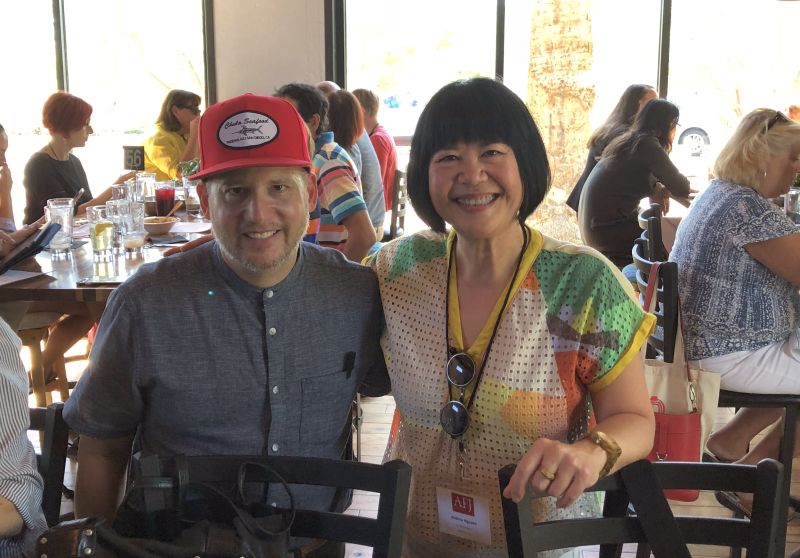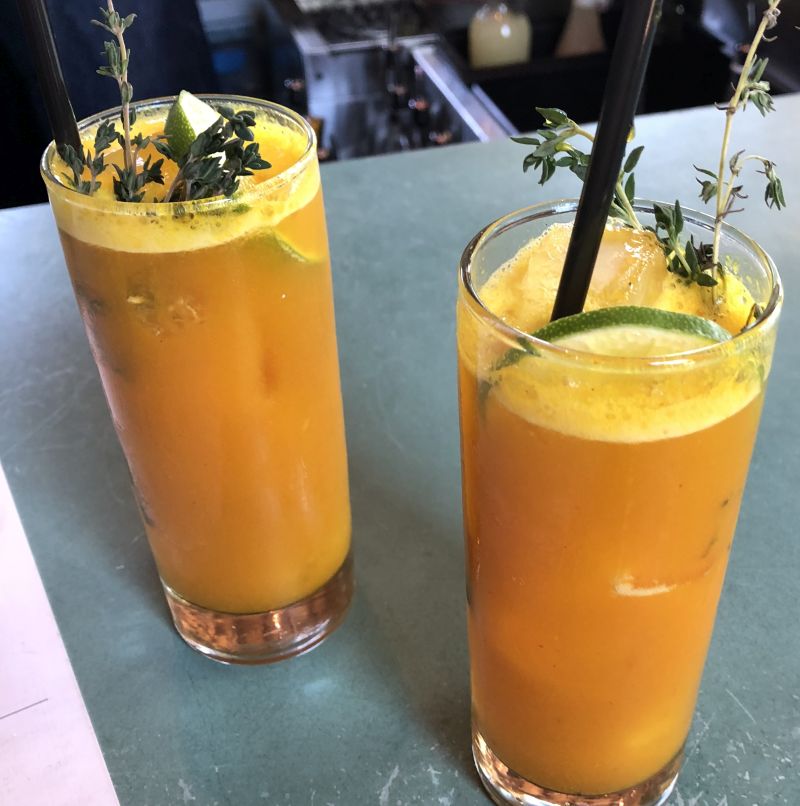
Meet Doug Robson, a chef and restaurateur in Phoenix, Arizona. This past Thursday, we met at Gallo Blanco, one of his Mexican street food restaurants. I was in town attending a conference of the Association of Food Journalists, and one of lunches was at Robson’s restaurant.
In giving our group an introduction to his approach to food, he discussed the merging of cultures and cuisines that appear on his menus. Robson was born in Mexico City to a French-Vietnamese mother and English-French-Jewish father. I was intrigued.
How did all these cultures collide?
That was my first question to Robson after a colleague introduced us. He explained: To escape Vietnam’s political upheaval, his maternal grandfather, a French soldier, sent his family to live in Europe. His paternal grandfather moved his family from Europe to Mexico City to escape the upheaval in Europe. His father was sent to Europe to study, where he eventually met his mother and the two married and built a life in Mexico City.
Robson grew up with Viet dishes like cha gio (deep-fried rice paper rolls). Food and cooking were important for his family, and despite earning a degree in psychology (he didn’t want to go to grad school and realized he didn’t enjoy the profession), he wanted a career in food and hospitality. He worked his way up to understand cooking as well as managing restaurants. That prepared him to open Gallo Blanco and Otro in Phoenix. Both of those restaurants have been part of a movement to elevate Mexican food in the city.
To help secure the future of good restaurants and encourage professional cooking, Robson is working with local schools and non-profits to help kids realize that the potential of careers in food. He pointed across the street to New Pathways for Youth, a local organization that he was collaborating with. I joked with that he was practicing psychology in such mentoring efforts. Many first-generation folks go into professional cooking for economic survival but someone like Robson did it by choice. He wants to help the next generation to be able to make that choice, too.
How does his Asian heritage influence his restaurants?
I got an insider’s tip when dining critic for the Arizona Republic newspaper Dominic Armato told me there was fish sauce in the carne asada. Robson verified that ingredient use and explained that he employs fish sauce, soy sauce and sugar – a trinity of ingredients for many Viet marinades like this one. And, he uses woks in his kitchen! I asked to see his operation.


Thinly sliced meats are cooked over a mesquite grill, cut into small pieces and held in “French pans” – carbon steel skillets. For each order of tacos, tortas and other treats, the meat is briefly refreshed in a hot carbon steel wok. It’s the wok hei that adds a last-minute fresh layer of flavor. The Chino-Latino connection.
Tortillas and telera rolls are also made in house, he added. That got us talking about how banh mi sandwiches are similar to Mexican torta sandwiches.
“The caldo de pollo at my other restaurant is basically pho,” Robson then said. I told him how I saluted the Vietnamese-Mexican connection with a pho michelada recipe in The Pho Cookbook. After all, both cultures adore pho and beer on ice!
At the Gallo Blanco bar, I ordered a round of Tierra Madre for a group of friends. The drink made with mezcal, turmeric, and tamarind was unusually ochre in color. When I asked if fresh turmeric was used, mixologist Tyka Chheng said yes, the infusion prepared the night before used fresh turmeric. Turmeric originated in in South Asia and Southeast Asia.

Later on, I check out the menu of Otro Cafe, Robson’s second restaurant. (Otro means other in Spanish.) Among the “Entradas and Sopas” offerings are guacamole, ceviche, and queso fundido plus caldo de pollo (chicken pho), caldo de vegetal (vegetable pho), and spring rolls made with rice paper and served with peanut and sweet chili dipping sauce.
You can eat and drink in the Mexican-Asian connection at Robson’s restaurants. Pretty amazing and very now.

















Eddie says
There are so many Mexican restaurants in San Antonio, TX. But that is to be expected. What surprises so many is how many Pho shops there are. Go into any one of them and you will find many Mexicans and Mexican Americans happily consuming their bowls, especially the ones with tripe and tendon, or the Bun Bo Hue.
Andrea Nguyen says
Exactly. So many delicious connections to make between the two cultures and communities.
Chip Walton says
That wok is fire! The Mexican-Vietnamese connection is strong at Gallo Blanco. And those cocktails were on point.
Andrea Nguyen says
It surely is!!!! So great to eat and drink with you in PHX!
Doug Robson says
Thanks Andrea. Really enjoyed our conversations.
Cheers,
Doug
Andrea Nguyen says
Same here, Doug. Thank you again for your hospitality!
Jerry says
Hello, My name Is jerry I am Mexican and I wanted to say that it feels great finally seeing a Mexican - Vietnamese restaurant. I found it amazing because my wife is Vietnamese and we both love each other foods and it was something special for us to see both of our cultures finally meet in a restaurant. Gallo Blanco is amazing and any Mexican Asians should try it you will feel a bit at home here. I also plan open a restaurant in Mexico city with a fusion of Mexican and Vietnamese food something that is not common in Mexico city.
Andrea Nguyen says
Hello Jerry! I've not seen many Viet restaurants in CDMX so I think you and your wife will have a hit. The mother of a friend of Viet mine has an Asian restaurant in Puerto Vallarta that offers some Viet dishes. https://www.bonitokitchen.com/menus
Good luck and I hope to dine at your restaurant some day!